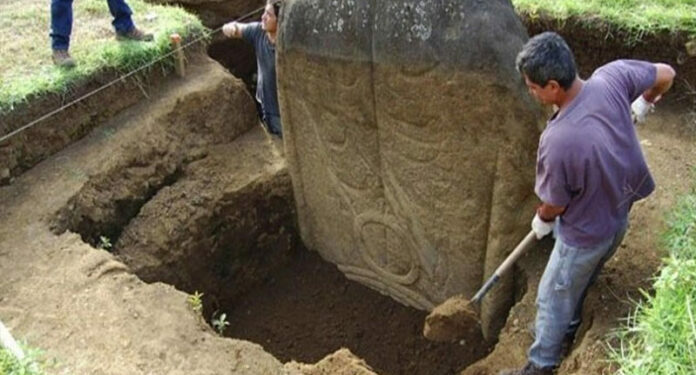Easter Island, located in the southern Pacific Ocean about 3,750 kilometers west of Chile’s coast, remains one of the most remote and mysterious places on our planet, and Rapa Nui National Park was designated a UNESCO World Heritage Site in 1995 to preserve the beautiful archaeological remains of this magical place.
It was recently discovered that some of the massive sculptures known as Moais, the famed humanoid statues of Easter Island, were semi-buried, up to eight meters below, and include various lithic writings known as petroglyphs, which are currently being decoded.

The symbols engraved in the volcanic stone have been preserved throughout the years because they are buried, and scholars believe that the carvings may represent components of the local people’s culture.
If specialists in the field had difficulty determining the approximate date of the Rapa Nui civilization’s origin, this latest and vital finding makes it much more challenging to understand this fascinating and mysterious historical find.

The Rapa Nui have been developing the Moais throughout time, building them higher with refined finishes and more stylized shapes. However, it is unknown how or why these statues were erected or if they were intentionally buried or buried by the action of time.
The significance of the mysterious inscriptions has yet to be decoded by academics, but this is not the only mystery surrounding the Rapa Nui and their Moais, which may weigh up to 80 tons and stand up to 10 meters tall.

The truth was that beginning in the 17th century, the population of Easter Island plummeted from 15,000 to less than 2,000 people.
Without question, the Easter Island Moais are among the most famous and revered structures globally, serving as a major tourist destination for the millions of visitors that visit the island each year.
























